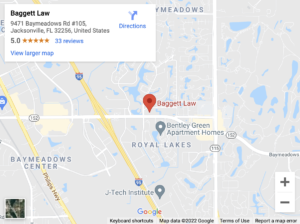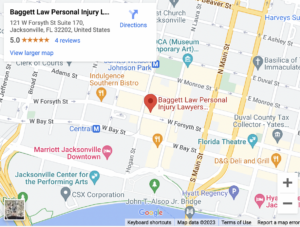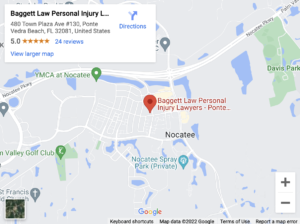
Your chest surrounds your thoracic cavity. In this role, your chest must perform several contradictory functions. It must protect your heart, lungs, and major blood vessels. But it must also have the flexibility to allow you to breathe, bend, and twist.
When you suffer a chest injury, you could face life-threatening consequences to your vital organs. You might also develop substantial limitations on your ability to move and meet your daily needs.
Here are some facts about chest injuries and how you can get compensation for the consequences.
What is the Structure and Functionality of the Chest?

Your chest runs from your shoulders to the bottom of your thoracic cavity, defined by your diaphragm. The diaphragm muscle sits below your lungs. It expands and contracts the base of your chest to help you breathe.
The most noticeable feature of your chest is your rib cage. The rib cage includes 12 pairs of ribs that connect to your spine through ligaments.
The ribs run around your sides to your sternum. The sternum attaches to the top seven pairs of ribs through cartilage. The next three pairs of ribs connect to the sternum through the lower seventh pair of ribs. The bottom two pairs of ribs only attach to the spine and do not attach to the sternum.
Your chest has several major muscle groups. Your pectoral muscles run from your upper arm to your sternum. Muscles also connect your collarbones to your shoulder and your head. At the rear of your chest, chest muscles attach to your shoulder blades, spine, and neck. Finally, you have muscles between your ribs.
These muscles perform many functions. They help support and move your arms, neck, head, and shoulders. They bend and twist your upper body. But most importantly, they expand and contract your chest so you can breathe.
Inside Your Chest
The chest protects your thoracic cavity. The thoracic cavity contains your heart and lungs. It also contains the major blood vessels like your vena cava, pulmonary arteries, and aorta that run to and from your heart.
The heart pumps blood to your lungs through the pulmonary arteries. There, the blood picks up oxygen and releases carbon dioxide. It flows back to the heart, which pumps the oxygen-rich blood to the body through the aorta. After the blood circulates through your body feeding oxygen to your cells, it returns to the heart to repeat the process.
Your chest plays a critical role in your respiration. Your lungs cannot expand under normal air pressure. Your chest muscles expand your chest. This gives your lungs space to expand without fighting against normal atmospheric pressure.
What Chest Injury Types Are There?
Chest injuries can happen in a few ways, including:
Blunt Force Injuries
You suffer a blunt force injury when you get hit by an object that does not penetrate your skin. For example, if you hit your chest on the ground in a slip and fall accident, you will suffer a blunt force injury to your chest.
Penetrating Injuries
Penetrating injuries happen when something pierces your chest. The object could merely pierce the skin. Or it could penetrate your thoracic cavity.
Penetrating injuries often happen in workplace accidents when you fall onto something like a piece of rebar. They can also happen when a machine or tool propels something into your chest like a nail.
Hyperextension Injuries
Hyperextension injuries happen when a force stretches your chest. An example of a hyperextension injury happens in a car accident. As you collide with another vehicle, your body bends and twists from the impact. This bending and twisting can hyperextend the muscles and joints of your chest.
Pressure Injuries
You can suffer a chest injury when you experience a rapid change in air pressure. This can happen while diving into deep water or mountain climbing. But the most common pressure injury happens during an explosion.
Explosions create a pressure wave. As the pressure wave hits you, you experience a rapid increase in air pressure. The pressure wave squeezes your chest and lungs. But since your lungs already have air in them, the pressure change can damage your lungs. You can think of this as similar to squeezing an inflated balloon.
What Are Some Chest Injury Examples?
Chest injuries can manifest in many ways depending on the damaged structures. Some examples of chest injuries include:
Chest Strain or Sprain
A chest strain happens when the muscles or tendons in your chest get stretched or torn. The most painful form of chest strain happens when the muscles that connect your ribs get strained. These muscles help you breathe. As a result, you feel pain with each breath when you strain these muscles.
Chest sprains happen when the ligaments holding your ribs to your spine get stretched or torn. Between the stretched ligament and the loose rib irritating nearby nerves, you can experience extreme pain from a chest strain.
Dislocated Rib
If a ligament suffers a severe sprain, the rib can slip out of the joint with the spine. A dislocated rib can produce pain and swelling.
Torn Cartilage
Cartilage holds your ribs to your sternum. An impact to the front of your chest can tear the cartilage. Unfortunately, doctors cannot do much to repair torn cartilage in your chest. Fortunately, cartilage can regrow over several months of rest.
Fractured Rib
A fractured rib can produce pain and bruising. But worse yet, the broken end of the rib can tear other tissue. If the rib pierces outward, it can lacerate the skin in a compound fracture. This open wound can develop an infection.
If the rib penetrates your chest, it can lacerate an organ or pierce the pleural lining leading to a collapsed lung.
Collapsed Lung
A collapsed lung happens when pressure on the lung prevents it from expanding. You have a pneumothorax if the pressure comes from air in your pleural space (the cavity between your lungs and under your chest wall). You have a hemothorax if the pressure comes from blood in your pleural space.
Without emergency treatment, a collapsed lung can kill you.
How Do I Get Compensation for My Chest Injury?
To get compensation for a chest injury, you must show that it resulted from someone else’s negligence. You must prove that a person or business failed to exercise reasonable care and that you suffered a chest injury as a result. To discuss how you can recover compensation for your chest injury, contact Baggett Law Personal Injury Lawyers for a free consultation.




